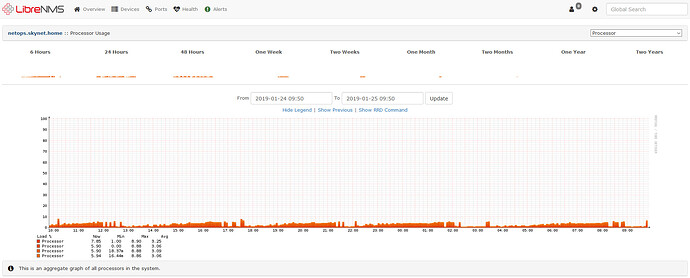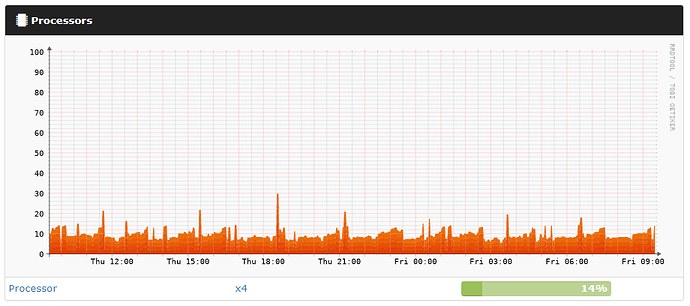Goal
Install LibreNMS on a Raspberry Pi to use as a Network Monitoring System for remote sites, home networks, etc.
On a Raspberry Pi 3 B+ and monitoring 6 devices, plus Syslog configuration, CPU utilization is plodding along at a pedestrian average of about 5% average. I imaging that a little Pi could probably monitor dozens of devices!
Helpful!
Not necessary, but helpful if you want FQDN device names instead of IP Addresses for your LibreNMS monitored devices. If you don’t have an enterprise network with DNS I suggest running something on your small/home network. I am running DD-WRT on my home router and have configured it for DNSMasq so I’m getting reliable hostname resolution on my local network.
https://wiki.dd-wrt.com/wiki/index.php/DNSMasq_as_DHCP_server
Raspberry Pi 3 B+
Buy the kit that suits you, power via USB, POE or a wall wart, your choice.
Memory
Jeff Geerling wrote a great article on the best SD Card to use in a Raspberry Pi 3 B+.
Raspberry Pi SD Card Performance Comparison
This is Jeff’s #1 recommendation: https://amzn.to/2T9enSZ
Distro
I chose the full distro, I’m using a 32GB card so I’m not concerned about hard drive space. After the install there is still 80% free HDD space.
I also want to be able to VNC into the device remotely to do network troubleshooting. I’m not a Linux whiz, I hope to be eventually but the desktop environment will help me.
Install the Distro
I used BalenaEtcher (see above) to create the install media. Go through the install process, get Raspbian installed and updated. Do not install anything else.
Reboot
Click the Raspberry in the Upper Left Corner > Preferences > Raspberry Pi Configuration
System
- Set your hostname
Interfaces [enable] - SSH
- VNC
Double Check other configuration settings. Reboot
Set a static IP if desired.
Install LibreNMS
SSH into the Raspberry Pi
Follow THESE instructions:
Read through them before jumping in, know what each line is doing. Don’t just fly through, copying and pasting into the SSH session.
Be sure to set a legit MySQL password.
LibreNMS Syslog
If desired, install Syslog
Configure your devices to point to your LibreNMS install.
Add Devices
Have fun!

